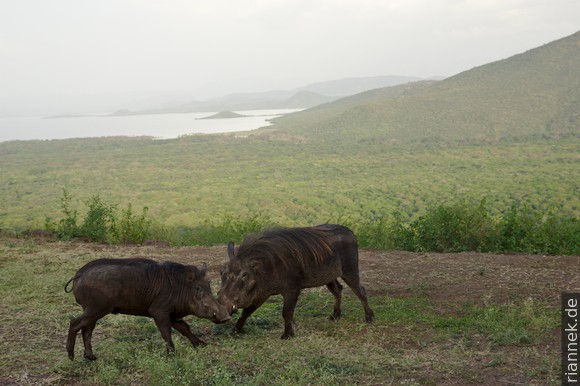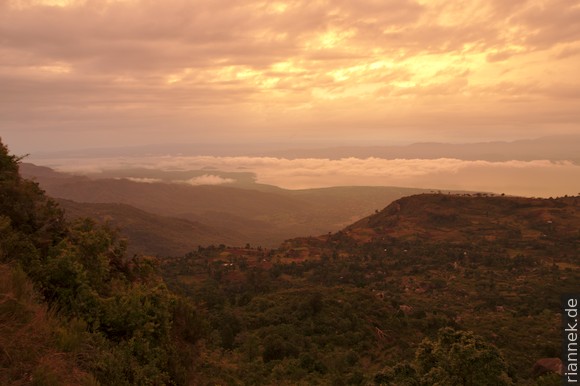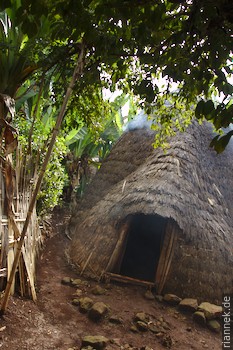
After a long time I am back in the East African Rift Valley, this time in the south of Ethiopia near Arba Minch. In southern Ethiopia, a series of lakes fill the rift, including the greenish Lake Chamo and the rust-red Lake Abaya. Between the two is the “Bridge of God”, a mountainous isthmus (made of volcanic rocks, of course) that is part of Nechisar National Park. A good view of it and of both lakes can be had from the lodges perched on a steep slope above the national park on the outskirts of Arba Minch.

We take a jeep tour through the national park, with beautiful views of both lakes (from a distance we also see crocodiles). On the other side of the “Bridge of God” is the plain called Nechisar, where we take a walk through the white grass. We find a large herd of zebras, also single kudus, gazelles and warthogs. In the afternoon we explore the part of the national park near Arba Minch at the “40 springs” where we find 3 different species of monkeys. Some of the springs are used for water supply and one of them serves as a pool, where we also jump in to cool down.

The highlight is supposed to be a boat trip on Lake Chamo to the so-called crocodile market, where there are usually many crocodiles. However, we only saw 3, which was due to the high water level. Hippos, normally also to be seen, we did not find at all.

Finally, we rumble up the slope of the rift valley in a bus, up to the villages of the Dorze with a great view of the lakes. This tribe is known for its elaborately woven huts and its weaving. The people mainly eat ensete (“false banana”): the plants look like banana plants, but the stem is eaten. We are shown how the edible part is scraped from the fibrous part. The result is left to ferment in a hole in the ground for a long time until a kind of flatbread can be prepared.

Actually, we wanted to spend the rest of the trip in the north of the country, we did not yet suspect that the corona virus would make us constantly change plans: At the end of the trip, we drove again to the East African Rift Valley to the Abijatta Shalla National Park.